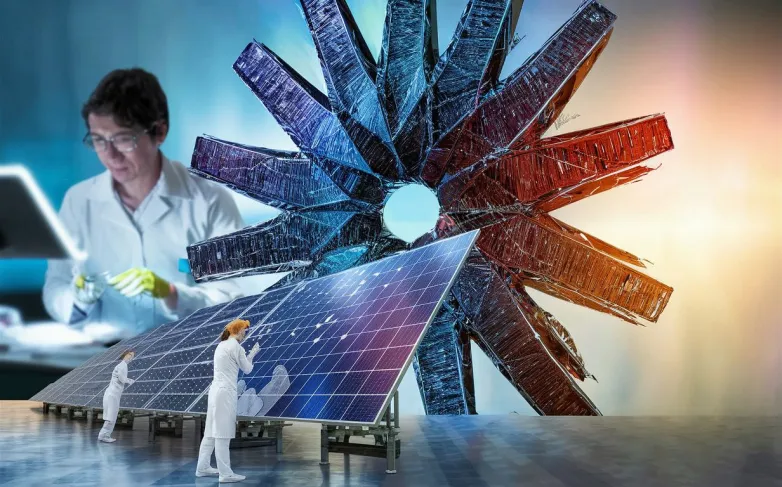Innovative Method Boosts Stability of Perovskite Solar Modules
- Revolutionary non-laser method for perovskite solar modules achieves 21.7% efficiency and 98% fill factor, surpassing traditional techniques. Major breakthrough in solar technology.

Researchers at HZB's HySPRINT Innovation Lab and institutions in China have developed a non-laser method for manufacturing perovskite solar modules using an adjustable wire mask. Traditional laser scribing can lead to decomposition of heat-sensitive perovskite materials and increased series resistance due to electrode corrosion. The new method prevents contact between perovskites and electrodes, resulting in a power conversion efficiency of 21.7% and a geometrical fill factor of 98%, higher than most laser-processed modules. The modules also showed good stability, retaining 90% efficiency after 500 hours.
All layers, including perovskites, were fabricated via vapor-phase deposition, with the team tuning precursor composition to achieve high efficiency. The use of naturally formed barrier layers contributed to the stability of the modules. This research represents a significant advancement in the development of perovskite solar technology, offering a promising alternative to traditional laser processing methods.
How does non-laser method improve efficiency and stability of perovskite solar modules?
- The non-laser method for manufacturing perovskite solar modules using an adjustable wire mask prevents contact between perovskites and electrodes, improving efficiency and stability.
- Traditional laser scribing can lead to decomposition of heat-sensitive perovskite materials and increased series resistance due to electrode corrosion, which is avoided with the new method.
- The power conversion efficiency of the modules using the non-laser method was measured at 21.7%, with a geometrical fill factor of 98%, higher than most laser-processed modules.
- The modules also showed good stability, retaining 90% efficiency after 500 hours of testing.
- All layers, including perovskites, were fabricated via vapor-phase deposition, with the team tuning precursor composition to achieve high efficiency.
- The use of naturally formed barrier layers contributed to the stability of the modules, further enhancing their performance.
- This research represents a significant advancement in the development of perovskite solar technology, offering a promising alternative to traditional laser processing methods.
Also read
- CNNP Optoelectronics brings utility-scale perovskite modules out of the lab
- Low-Temperature Sequential Deposition Lifts Inverted Perovskite Solar Cells Efficiency Record
- Self-Assembling Molecule Breakthrough Brings Commercial Perovskite Solar Closer to Market
- Camphor Additives Boost Perovskite Solar Cell Efficiency
- NUS Sets Record With 26.4% Perovskite-Organic Solar Cell
